
On this first anniversary of the tsunami that devastated South Asia, we look at the fallout for the people of Sri Lanka. We speak with the Sri Lankan ambassador to the United Nations, an anti-poverty activist in Sri Lanka, and a physician treating Tamil refugees. [includes rush transcript]
Memorials are being held across the world this week to mark the devastating tsunami that hit South Asia one year ago. It was one of the world’s worst-ever natural disasters.
On the morning of a December 26 scientists recorded one of the world’s most powerful earthquakes ever off the coast of the Indonesian island of Sumatra. Scientists soon realized the earthquake could form a deadly tsunami. But, unlike the Pacific Ocean, the Indian Ocean region had no tsunami warning system. The results were catastrophic. Within hours some 218,000 people had died across Indonesia, Sri Lanka, Thailand and India. Nearly 2 million were left homeless. And the effects will be felt for years.
A new survey from Oxfam found that 80% of the 1.8 million people left homeless by the disaster were still without satisfactory permanent housing. On the Indonesia island of Sumatra, all residents are still living in tents or shelters. Overall Oxfam estimates some 300,000 new houses still need to be built in India, Indonesia and Sri Lanka.
We begin in Sri Lanka where more than 31,000 people died in the tsunami. The United Nations has reported Sri Lanka alone needs 100,000 homes–only about 6,000 have been built so far.
- Prasad Kariyawasam, Ambassador from Sri Lanka and the Permanent Representative of Sri Lanka to the United Nations.
- Sarath Fernando, co-director of the Movement for National Land and Agricultural Reform in Sri Lanka.
- Dr. Karunyan Arul, a physician who works with Tamil refugees and other war victims.
Transcript
AMY GOODMAN: We’re joined in the studio by the Ambassador from Sri Lanka to the United Nations. We are joined on the telephone from California and Sri Lanka: on the phone, Sarath Fernando is with us, he’s the co-director of the Movement for National Land and Agricultural Reform in Sri Lanka; also joining us from California is Dr. Karunyan Arul, physician who works with Tamil refugees and other war victims. We welcome you all to Democracy Now! And we begin with the ambassador. Welcome. Can you talk about Sri Lanka today, a year after the tsunami?
PRASAD KARIYAWASAM: First, let me take this opportunity to thank the American public and the international community on this solemn occasion for sharing our grief and for coming readily to our help. We were touched by it, and we felt humanity is alive. As you know, we — the destruction caused by the tsunami in Sri Lanka is enormous and two-thirds of our coastline was affected. One million people were displaced. 90,000 buildings were destroyed. Nearly 40,000 people went missing or killed. In a situation like that, the rebuilding effort, we have estimated, will take between three to five years.
At this point, although everyone is in temporary shelters, and permanent shelters are being built, and we are aware of the slow progress, but we want to build better and build with equity. And because the tsunami touches all areas of the country, in a situation like that, we are constrained by various factors, but we have certain guiding principles. We want transparency, we want equity, all that is there.
We also — the livelihood of people, 150,000 people have lost their livelihood. So we have to rebuild their livelihoods. We have to build protection. But we have set up a blueprint for that, and we have international community support. In fact, I have to thank again President Clinton, U.N. special tsunami envoy, for being a bedrock — giving us bedrock support for the whole recovery process. We think we estimate $2.1 billion are required for reconstruction of Sri Lanka. We have commitment for that. But, of course, we need to make commitments to disbursement. At this point, we have disbursed only $500 million. It’s a process that is going forward.
AMY GOODMAN: We’re also joined on the ground in Sri Lanka by Sarath Fernando of the Movement for National Land and Agricultural Reform. From your perspective there, can you describe the progress, the devastation first, and then where you are today?
SARATH FERNANDO: The degree of devastation is very [inaudible] by the embassy there. 40,000 lives are lost. The quality [inaudible]. The number of houses destroyed was 80,000. About 500,000 people have been displaced. That’s a really important factor. In the northern east, people who were affected by the war twenty years ago and people who have been living in temporary shelter and camps for as long as twenty years have been also hit by the tsunami. So, they face two disasters at the same time.
Now, regarding the recovery process, what [inaudible] very correct, the number of houses, permanent houses built is very small, it’s about 4,000 on, and about 80% or more of the people have lived now in temporary or what they call transitory houses for one full year. And living in this kind of situation is not very easy, and in Sri Lanka we have had several very heavy monsoons, and there’s a dry period when things become very hot, and these people have been living in this kind of situation for one full year.
Now, if I may say something about the reason for this kind of situation, I would put the blame very much on the government policies and plan. As soon as the tsunami occurred, within about less than ten days, a body was appointed, three task forces were appointed, and one was called the Task Force for Rebuilding the Nation, TAFREN. All people who were appointed to that councils were the top most business operatives, private business operatives in the country. They were government organizations who were also big private business operators. And many of them were owners of the biggest [inaudible] companies in Sri Lanka.
As a result, they prepared plans very quickly. By 15th of January, the first plan was ready. And according to this plan, the biggest priority U.N. missed, not to help the process of recovery of the affected people. I would view concrete results about this, coming from the first plan, the total allocation out of a total allocation of $1.5 billion U.S., the total allocation for housing and townships was $400 million U.S. out of the $400 million U.S. The amount allocated for temporary shelter was $20 million U.S. only. And the amount allocated for permanent housing for destroyed, completely destroyed houses, 80,000, was $80 million U.S. This comes to about $1,000 U.S. per house. Subsequently, the government has declared another figure of $250,000, which is about $2,500 U.S. per house.
But the government asked the question and got a lot of finances. I think the largest contribution of people from all over the world, government and non-governmental agencies and foreign civilians. These are the biggest contributions that came for any disaster of this type. Now, with all of that, the amount that was allocated for housing, temporary housing and permanent housing for destroyed fisher people’s houses, the amount that the government spent was almost nothing. I’m saying this because all of the temporary shelter was built by non-governmental organizations. Many international non-governmental organizations came in, and regarding permanent housing, what the government is doing is they have signed memoranda of understanding between [inaudible] international non-governmental organizations and local NGOs to build houses at their expense. Therefore, the government has not spent the amount that they allocated for this kind of thing by the government.
AMY GOODMAN: Sarath Fernando, we are going to go to break. When we come back, we’ll get response from the ambassador. We’ll also talk with Dr. Arul, who works with Tamil refugees in Sri Lanka and talk about the politics of the distribution of aid in this year after the tsunami. And then we’ll look at Indonesia, ground zero, Aceh, for the tsunami.
[break]
AMY GOODMAN: As we talk about this first anniversary of the tsunami, particularly looking at Sri Lanka and Indonesia, right now joined by the permanent representative of Sri Lanka to the U.N., Ambassador Prasad Kariyawasam, we’re also joined by Sarath Fernando in Sri Lanka, just outside Colombo, of the Movement for National Land and Agricultural Reform, and on the line with us from California is Dr. Karunyan Arul, a Tamil physician who works with Tamil refugees. Ambassador, your response to the critique that Sarath Fernando talked about, who gets help and who doesn’t in Sri Lanka.
PRASAD KARIYAWASAM: Well, first of all, I’m happy that you had one individual from Sri Lanka, who is representing a non-governmental organization, giving his view. The country, ours is a vibrant democracy, and everyone has a right to his opinion. But I must emphasize that government has to work with many players, not only one individual or one organization. In fact, government set up a blueprint for reconstruction and rehabilitation in consultation with twenty government institutions, twenty bilateral and multilateral organizations, eighty national NGOs contributing relevant details, so we have had to coordinate a large number of donors, contributors and individuals.
And we need to — when you coordinate and set up a blueprint and implement that, there could be criticism from some quarters that it is not happening in the way that they individually wanted. And we have to build equity, and we had to build in such a manner that is sustainable. And we need to take into account the local politics of it. So, we understand there could be certain drawbacks in the perception of some people in the way the government is proceeding, but the fact remains things are happening on the ground.
There had been no outbreak of diseases. Everyone is now having temporary shelter. Permanent housing are being built. Plans are there for infrastructure rehabilitation. Donor coordination is transparent. Everything is on our website. We have a very transparent mechanism. We work very closely with the U.N. — United Nations system, in particular with President Clinton’s office, that is the Office for Tsunami Recovery. I think government is transparent, government is committed. It is — but it could be sometimes there could be various leagues that are not in line with the others.
AMY GOODMAN: Sarath Fernando, your response?
SARATH FERNANDO: Now, about equity, I would like to hear further details. In the plan, I don’t believe that they consulted all the people. But in the list he mentioned, there were no representative of the affected people. That was one big mistake and the total terror that has led to the present situation, because in our view — these are not my personal views. I talk on behalf of the more than 200 organizations who are campaigning on this issue. They’ve now appointed a People’s Planning Commission, comprising of very clear, very eminent people, you know, city providers and others. Now, about equity, in the first plan they allocated for housing this $100 million U.S., but they set apart $300 million U.S. for what they call township building. Now, in the report, in that proposal, they say there will be 12 large townships, 20 medium-sized townships and 30 small townships, all with modernized facilities.
Now, the whole approach, as described by Mr. Mano Tittawella, who was heading that effort earlier, he said that tsunami has given an opportunity for Sri Lanka to become a modernized society that can meet the dreams of the 21st century. Now, a limited very small group of elite, rich elite, had some dreams about a modernized society for the 21st century, but this is a very limited group of people who are not at all affected by the tsunami. The large numbers of people who were affected by the tsunami who are living in the present miserable conditions were not consulted. If they were consulted, they would have said, 'Before you build all these modernized townships that only the rich people can use these, these are not for tsunami-affected people, because in the plan, they have said that they're putting up houses separately, 80,000 houses, at a cost of $1,000 U.S. each.’ That is what the plan says. Therefore, you can understand the type of equity.
Later on in May, when the donors came to Sri Lanka and had further discussions, the total budget increased from $1.5 billion U.S., if I am correct, the figure given by the embassy was different, it was next budget for $3.2 billion U.S. In the plan, in that plan, they have said they will build 15 tourism development zones right down the beaches. So 52 modernized townships and 15 large tourism development zones, one of which is to be Arugam Bay, that alone, the estimated cost is $80 million U.S. You know, the amount allocated or to be allocated for one tourist resort is equivalent to the amount allocated for 80,000 fisher people’s houses.
Now, in the future, in this territory that was affected, they are going to build 52 modernized townships and 15 tourism development zones, there will be no space for fisher people to live anywhere. That is why if you look at the decision to declare the buffer zone, the decision was taken very quickly, within about a week or so after the tsunami, they said no family would be allowed to go between 100 meters and 200 meters on the east coast and live on the beaches. But simultaneously, they said tourist hotels would be permitted to repair and start business. And within a week they started business. Now, they have introduced 15 new tourism development zones which will completely push out the fisher people. In Arugam Bay, the fisher people would be pushed out by eighteen kilometers, no, seventeen kilometers.
AMY GOODMAN: Sarath Fernando, I wanted to bring in our other guest, as well, Dr. Karunyan Arul, to talk about the situation, as well, from the political perspective of what has been happening in Sri Lanka. The government right now in a very difficult period, the Sri Lankan government and Tamil Tiger rebels must resume peace talks immediately to prevent a return to civil war, according to peace monitors. The Norwegian peace envoy said there’s no time to lose, so at the same time the tsunami has so seriously impacted Sri Lanka, there is a very serious political divide in the country between the Tamils and the government. Doctor Arul, can you talk about tsunami politics and the politics of what is happening in your country, particularly in the north?
DR. KARUNYAN ARUL: Yes. Thank you, Amy, and you know, I, too, like the ambassador, want to thank the generosity of the U.S. people for giving us all of this money. Unfortunately, these funds perhaps may have exacerbated the existing divisions that are in the island and may have contributed to the sad situation where there is essentially a war breaking out, with all of these signs of war breaking out, such as sweep arrests and midnight searches and checkpoints. And what happened is the tsunami hit mainly the Tamil area, 70% of the areas hit were the Tamil area, the eastern province. And substantial portions of these areas are controlled by the rebel Tamils.
And the governments stopped foreign dignitaries, including President Clinton, including Kofi Annan, from visiting to just to see the devastation. In other words, the politics of the country, the division between the government and the Tamils, which has been there for decades, prevented the government of even allowing seeing what the damage was, and this same attitude of the government, of marginalizing the Tamils, which has been in place for decades, has been continued into the tsunami politics. And what has happened is the monies that came in, many of the NGOs and foreign governments realized that the Sri Lankan Sinhalese government state was incapable of delivering what is needed to the Tamils in the northeast who were the most affected by the tsunami, and what they did was, with the help of the Norwegians, they worked out a scheme or administrative scheme to share administrative responsibility in distributing this money. And that was called the PTOMS: Post-Tsunami Operational Management Structure.
Unfortunately, the inherent racism that is so prevalent in the south of this country appealed against this, and they used various legal and other methods, and the PTOMS agreement, which was hailed by all countries, essentially was scuttled. Had the PTOMS been there, it would have been a confidence builder between the rebels and the Sri Lankan army to move forward in the peace process that had stalled with the new government coming in. I’m talking the previous government, the Rajapakse government. And thus, tsunami money, the tsunami sadly has only exacerbated the divisions and the inequity.
All of the discussion that Mr. Fernando had is essentially about the south, which is only 30% of the affected land. 70% of the affected land remains untouched, and there is a war there, a war that is impeding tsunami reconstruction and the government in the center, which does not want to give up reconstructive powers to the people. It is the people are being denied that money, and so the confidence of the Tamils and the rebels in the government to deal with them is breaking down, and there’s war.
AMY GOODMAN: Ambassador, your response?
PRASAD KARIYAWASAM: Thank you. Sadly, good doctor seems to be out of touch with reality. He lives in California, perhaps he does not know what’s happening. Let me clarify a few things. First of all, two-thirds of our coast was affected, and most people who died in the tsunami was those who belonged to what is called the Muslim community, who has no tract with the Tamil rebels or LTT. And they were in the eastern province. That is the place that has been destroyed most, and reconstruction and rehabilitation is going on very well in that area, and I can vouch for that.
Second, the allegation that the V.I.P.s, like President Clinton and Kofi Annan, did not see the north, and this is not true. I, myself, was in Sri Lanka. I accompanied Mr. Kofi Annan to Trincomallee, and where we see the Tamil refugee camps, we met TRO, we met — so that is again not true. President Clinton, even this time, went to Kalmuni, that is the eastern province, a coastal village. So these are all politics of it.
What is unfortunate is that people who live in this country are living in the past. They are living in a kind of a dream world of their own. And that is preventing us from reconciliation. And we expected — in fact, when the tsunami struck, tsunami did not distinguish between communities. It struck everybody equally. And at that time there was great comity between people. I know stories of soldiers risking their life to save Tamil civilians. It happened in the north and the east. Those are facts. I had my own friend doctors who are living in Colombo, who drove to the north and to the east, rather than to the south — they were Sinhalese doctors — because they said that these people need help. That’s the spirit.
But we expected after the tsunami, the Tamil rebels, the LTT to change, to change their ways, change their political agenda of total separation. But as has been confirmed by the international community — the international community, including the facilitators of the peace process appealed to the LTT: Change your ways, learn the art of compromise in politics, learn the art of — not the art of violence to achieve your own ends. What they’re doing today is still the same, more of the same. So that is the tragedy, but the government and the international community’s committed to reach out to each and every corner in the country, and it is being done, despite all this rhetoric. On the ground rehabilitation is taking place in the north and the east, and that’s a fact, and no one is in despair. No one is having any problem. Now, so that is the reality on the ground.
AMY GOODMAN: Dr. Arul, your response?
DR. KARUNYAN ARUL: Mr. Ambassador, you know, apparently we are both living in different realities, and you have a reality [inaudible], but back to the point. Let me make my point. Isn’t it a fact that the rebel-held area, Mullaittivu, which was very badly hit, was never visited by a foreign dignitary, including — I’m essentially talking Kofi Annan and President Clinton? They visited eastern province, which is under government control. Okay, isn’t it a fact that the government agreed to share administrative responsibilities to the LTT, and then it is the Sinhalese south and their politics that broke it, and that when they reneged on the agreement? These are facts.
AMY GOODMAN: Can you explain for one minute just to — just for people who are not familiar with the politics of Sri Lanka, the presidential election took place when? This is since the tsunami, about a month ago?
PRASAD KARIYAWASAM: Yes.
DR. KARUNYAN ARUL: Yeah.
AMY GOODMAN: Can you talk about the policy change, the agreement before the presidential election, and the agreement afterwards from each of your perspectives, Dr. Arul?
DR. KARUNYAN ARUL: Well, in the presidential election, there was a very clear choice in the Sinhal electorate. The Sinhal electorate had two candidates: one who wanted to grant some degree of federalism to the Tamils, who wanted to share power with the Tamils, which has been the basic problem in the political conflict that is going on, sharing power with the Tamils; another candidate who wanted what is called a unitary government where all power resides in Colombo, another government which would not accept the basic identity needs of the Tamils, which are being threatened by the Sinhala government policies over many decades, including the right of self-determination, right of management of their affairs, etc. There was a very clear choice, and the Sinhal electorate voted for the person who said we will not share power with the Tamils. And the Tamils did not participate as much as they did in the other elections, and so the choice was made by the Sinhala people and is very clear.
And so, the current government has taken steps back in the peace process and the assumptions of how the peace should be done, which essentially was by sharing power with the Tamils. And so we are in a quandary, and war is starting, and it is so paramount that there has to be peace. There has to be peace. There is no point putting blame game and pointing who is there and what they did in the past. And I think in order for peace to come back, the first thing to do is the government must meet with the Tamils, not put conditions of where they want to meet, not try to marginalize them, not try to isolate the Tamil community from the international community, not demonize them, but sit and talk with them and first of all implement a cease-fire agreement, which is already in place, and then go towards the political solution, which I think the current president, who is a pragmatic man by many, many — hopefully will work to it. That’s what I would like to say. There’s a clear choice. The electorate had a clear choice. They went in one direction. So the Sinhala south has to decide how much of power they want to share with the Tamils.
AMY GOODMAN: Sarath Fernando, you’re in the south. Your response?
SARATH FERNANDO: I would like to agree very much with what the doctor said about the situation in the north. Now, what I would like to add to what he said is that the entire Sinhala constituency in the south is not a racist group that is crying out against any kind of settlement. There are many organizations here. Now, about discrimination of the people against the people in the north, it is very true. Now, concrete figures, if I use, the amount allocated for the tsunami-affected families and their daily food and expenses and so on, is much higher than the amount allocated for such requirements for war-affected people who have been living in those temporary camps for 20 years. And there [inaudible] that should get less, there are such incidents. Now it’s not the people who agree. That’s my point.
For instance, I work with a network of organizations, about 200 organizations, fishery sector organizations, working in the north, east and also in the south, they’re working really well together with the fisheries organizations in the north, and we have taken positions about the settlement of this issue. We are totally in support of a complete devolution of power. The people in the north, the Muslims that are in that area and the people in the north, the Tamil people in the north, have the complete right to decide on their own about what kind of recovery, what kind of development, what kind of economy they want. They have — they should have the control over the resources in that area, whether it’s the sea or the land. So therefore, it’s very necessary — that’s the only way a settlement could be reached. A central government wanting to centralize power, whether they are representing the extreme Sinhala in the south or otherwise, the total interest is to have control over all the resources and all people and to do something that would destroy not only the people in the north, but also the people in the south.
AMY GOODMAN: Ambassador, we have just one last 30 seconds. December, the bloodiest month since the Sri Lankan truce came into effect in 2002. You represent the new government.
PRASAD KARIYAWASAM: Well, a government — successor government is committed to democracy. We had democratic elections. Unfortunately, LTT, that is Tamil Tigers, led — some Tamils boycotted the elections. Tamils are in the government. There are Tamil ministers in the government. The government is committed to talk to Tamils. The government is committed for substantial devolution of power. Government is committed to let Tamils run their own affairs in the north and east. It is up to the LTT to respond to that, change their ways and come to the negotiating table and talk. They should not depend on violence. It’s unfortunate, some people still talk LTT language, while LTT is a banned terrorist organization in this country, and because they are bent on violence. We want to talk to LTT. We want to talk to Tamil people who are the government. We are committed for all, but I agree with Mr. Fernando, that actually what Mr. Fernando said is what government has had in mind. We want to talk. We don’t want war, but LTT does not seem to change their ways. That is our problem.
AMY GOODMAN: We’re going to have to leave it there. I want to thank you all for being with us. Prasad Kariyawasam is the ambassador of Sri Lanka to the United Nations, representing the new government of Sri Lanka; Sarath Fernando, Movement for National Land and Agriculture Reform, known as MONLAR, in Sri Lanka; and Dr. Karunyan Arul, Tamil physician working in Los Angeles with Tamil refugees. When we come back, we’ll look at another country, ground zero for the tsunami, one year later. We’ll look at Indonesia and particularly Aceh.

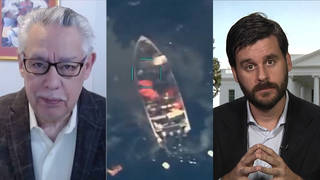
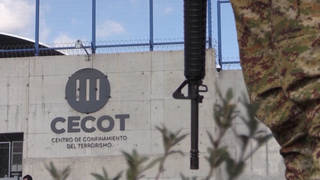
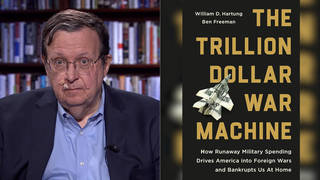
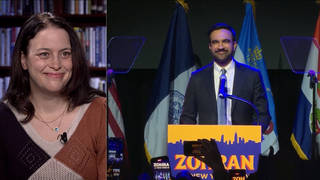





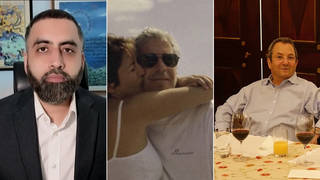
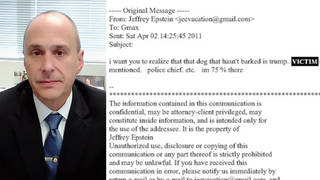
Media Options